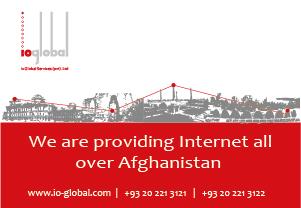After over decades on the drawing-boards, the Turkmenistan-Afghanistan-India (TAPI) gas pipeline project which is often regarded as the coup de grace against the long-discussed Iran-Pakistan-India gas pipeline project, is likely to complete by the end of 2019.
As a major development, Turkmenistan has allocated US$2 billion from its own resources to implement TAPI gas pipeline project to export gas to Afghanistan, Pakistan and India that will pass through war-torn Afghanistan, Pakistan Observer has learned.
“ $2billion has been allocated to transform TAPI project into reality,” officials privy to the development told Pakistan Observer adding that Turkmenistan has established a company for financing of TAPI gas pipeline to complete the project by end 2019.
Turkmenistan has already hired a Japanese consortium to develop the gas field and construction of pipeline work in Turkmenistan territory had been awarded to Chinese firm to lay 200 km pipeline.
Pakistan government has imposed a levy for financing of the project. As many as $200 million will be spent by each country Afghanistan, Pakistan and India to lay pipeline to transport gas.
Turkmenistan has to develop two fields for gas transport under TAPI. In Afghanistan security survey work has been done and mine swiping work has been started. Target of completion is four years.
Turkmenistan will invest around $25 billion to deliver 3.2 billion cubic feet of gas per day (bcfd) to energy-hungry Afghanistan, Pakistan and India by December 2019, which will continue for 25 years
A gas sale and purchase agreement had already been signed in 2013 to set the pricing mechanism under which the gas price at Turkmenistan border would be around 20% cheaper than Brent crude.
With the title of peace pipeline, the TAPI project is expected to bring peace and stability in the region because of cooperation among regional countries and reliance on each other for meeting energy needs. The pipeline will connect South and Central Asia.
Pakistan and India will receive 1.325 bcfd of gas each while Afghanistan will get 500 mmcfd. Turkmenistan is expected to achieve financial close for the project by December 2018 for simultaneous completion of the gas field development and pipeline construction in three years.
There are two type of investment in TAPI project as $15 billion for developing field. This project had been awarded to Japanese companies that were working to extract gas against service fee and they would not become shareholders in the gas field. Other portion was pipeline project which requires pipeline material and compressors and requires around $10 billion funds to lay pipeline.
Earlier, Asian Development Bank (ADB) was playing role of transaction advisor. Therefore, it had expressed inability to join this project as financier due to conflict of interest being transaction advisor. However, it had surrendered its role as transaction advisor now and offered $ 1 billion to finance this project. ADB is being dominated by Japan and the bank made offer of financing after Japanese companies consortium won contract of developing gas field in Turkmenistan from where gas is to be supplied to Pakistan, Afghanistan and India under TAPI pipeline project.
Islamic Development Bank (IDB) dominated by Saudi Arabia had also offered $500 million to finance TAPI pipeline project. Saudi Arabia is a major shareholder of 23.5 per cent of this bank and this bank had also come up with an offer of financing to TAPI pipeline project. The TAPI Company is to achieve financial close of the project by end of this year.
Off-the-record conversation with well-informed officials and diplomats revealed that it is intended that segments of the TAPI pipeline in Afghanistan are buried in order to make them less susceptible to terrorist attacks.
Local communities will be given incentives to participate in this defence, and the central government has bruited the deployment of 7,000 soldiers (to be trained by NATO) to safeguard the route.
Successful implementation of the project would not only assist in the peaceful economic development of Afghanistan, diversify Turkmenistan’s gas exports, and provide resources to energy-hungry Pakistan and India. It would also alter the geopolitical contours of the region, providing an artery for intensifying cooperation in the meta-region that lies east of the Caspian Sea, south of Russia, and west of China.
In particular, it would in the first instance integrate Afghanistan more into South Asia while giving India the opportunity that it has long sought to deepen its own geo-economic projection into Central Asia.
View expressed in this article are of the author’s own and do not necessarily reflect Pajhwok’s editorial policy.








GET IN TOUCH
NEWSLETTER
SUGGEST A STORY
PAJHWOK MOBILE APP